
Six Effective Steps to Solve the Skill Gap on the Factory Floor
How can manufacturers fill the gap left behind by someone with 20 years of experience? The solution is simple.

According to the U.S. Bureau of Labor Statistics, millennials, or those born between 1981 and 1996, will make up 75 percent of the workforce by the year 2030 — a statistic that places considerable pressure on manufacturers to tap into their talent. As more baby boomers exit the workforce, the skill gap between the jobs that need to be filled and the skilled talent pool capable of filling them is widening. This skills gap is projected to leave an estimated 2.4 million positions unfilled and put $2.5 trillion in manufacturing gross domestic product (GDP) at risk over the next decade, according to Deloitte.
The task seems daunting: How can we fill the gap left behind by someone with 20 years of experience on a production line with a younger, more inexperienced operator, and then get him or her up to speed as quickly as possible? The right digital tools can help.
Here are six steps you can follow to solve the skill gap on your factory floor using a connected worker platform.
1. Protect Valuable Knowledge
The first step to solve the skill gap is to tap into the knowledge, skills and resources of the retiring generation — a process that involves capturing and then digitizing this knowledge. Many “baby boomers,” or those born between 1946 to 1964, have been working in the manufacturing sector for several decades and as a result have a lot of knowledge about the industry, their role and the equipment. As you prepare to fill the positions left behind by these retirees, it’s critical to first capture their knowledge with the ultimate goal of transferring it to the incoming workforce.
To get started, simply record your workers talking using a smartphone, and then transcribe the conversation. Once you’ve captured this information, you can structure it depending on your needs and level of digitization. For example, using a connected worker platform, you can write a new standard operating procedure (SOP) or create new checklists or instructional manuals within the knowledge base. No matter what system you use — whether you have some digital tools in place or none at all — capturing the knowledge of your workers before they leave and then transforming it into a usable format is your starting point.
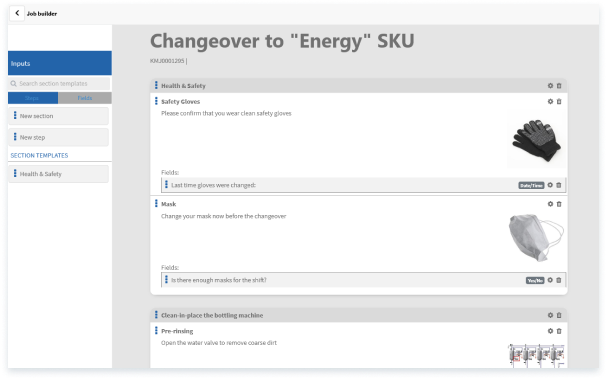
2. Transfer the Knowledge Between Your Operators
As already mentioned, keeping knowledge locked in the minds of a few critical operators poses a significant risk when these operators retire. Already, many manufacturers are using a variety of strategies to transfer the knowledge from older operators to younger operators including formal training programs, job shadowing and apprenticeships. Another strategy is to implement a digital system that facilitates the knowledge-sharing process. For example, connected worker platforms like 4Industry include a comprehensive, digital knowledge base that can be continually updated and expanded upon. While working alongside and conversing with older operators, a younger operator can simply input what he or she learns directly into the platform as a text-based article, step-by-step checklist, video tutorial — and more.
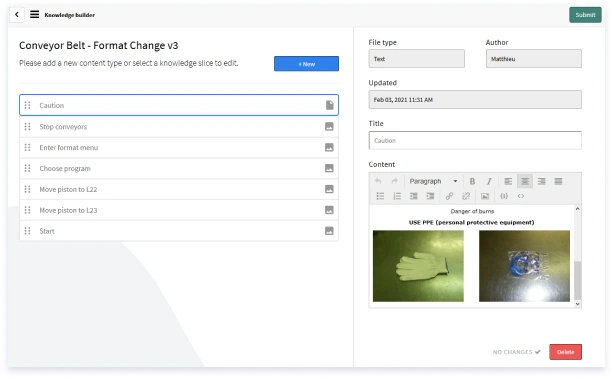
3. Mobile-Enable Your Workforce
Millennials are already accustomed to using smartphones, and it’s important to take advantage of this trend on the shop floor with a user-friendly, mobile-first connected worker platform. These tools include comprehensive knowledge bases that operators can access from the palm of their hands using a smartphone or tablet. Contrast this with the traditional way of having to leave the workstation to look for a knowledge item, print it out and then carry it around the factory — a cumbersome, time-wasting process.
With a digital system, a new operator can simply pull out his or her smartphone and scan a few knowledge items or pull up the latest SOP. This accessibility reduces the unnecessary travel time around the factory and also provides new operators with all the information they need to do their jobs successfully, bringing you one step closer to solving the skill gap. These mobile platforms also make the new idea registration process easy, enabling manufacturers to champion their continuous improvement (CI) efforts, even as the workforce transitions.
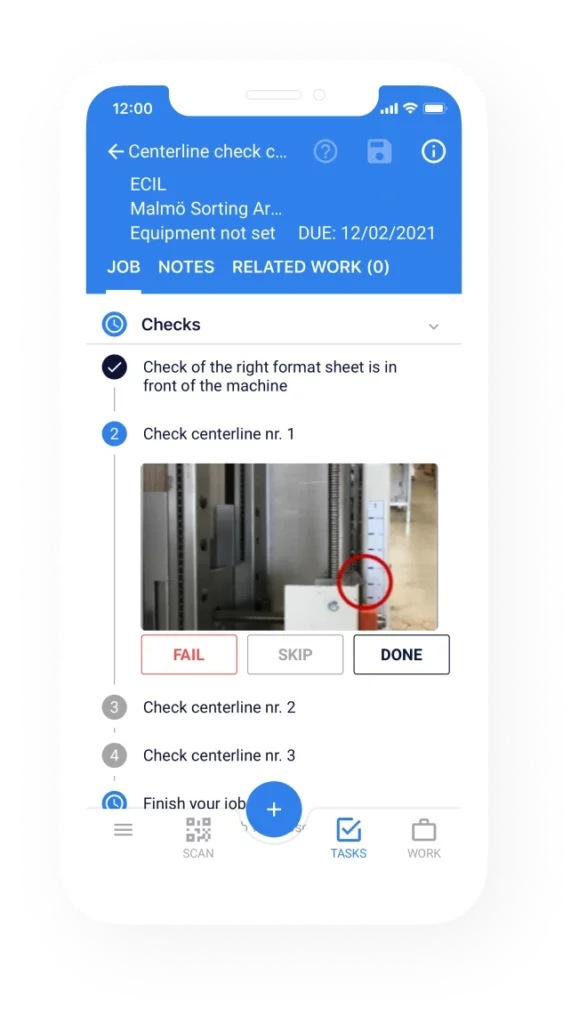
4. Be Ready for the New Workforce
Younger operators are used to mobile devices and are mobile themselves — from using laptops versus desktops, to working remotely versus in an office. Because these digital nomads have certain expectations about work, it’s important to have paperless tools and systems in place to retain them as long-term employees. Connected worker platforms already meet many of these expectations. Here are just a few examples:
- Mobile manufacturing apps like 4Industry give users access to relevant information no matter where they are in the factory. In addition to their searchable and intuitive nature, these tools include QR and NFC code technology, granting operators instant access to all knowledge and tasks for a specific piece of equipment.
- Whether operators are performing an assessment or reporting an equipment breakdown, they can snap a picture of a machine using their smartphone and input details directly into the system. It’s easy to track the status of these registered issues, as well as stay on top of other key performance indicators (KPI), using deviation management modules and manufacturing dashboards.
- Connected worker platforms let anyone send notifications and alerts to mobile devices. An operator can send a request for assistance to an engineer or notify a line supervisor about a breakdown, for example.
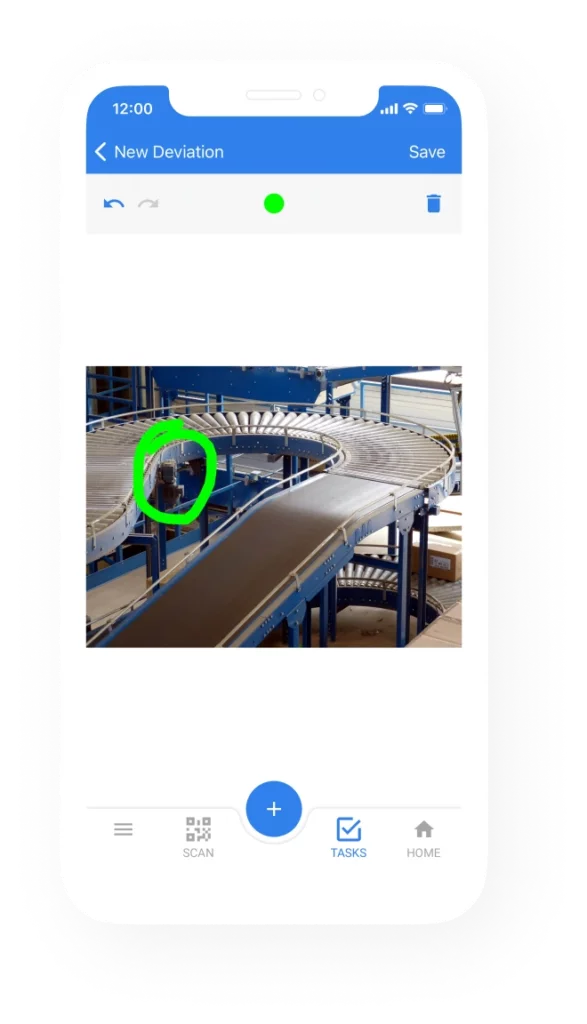
5. Use Knowledge to Reduce the Skill Gap
Connected worker platforms feature interactive knowledge bases that make SOPs, safety guidelines, technical manuals and other items interactive and searchable. These platforms also include a helpful suggestion engine that presents relevant knowledge items that can help workers solve a particular problem. This digital knowledge base reduces the need to formally train and onboard new employees and instead makes the learning process a continuous, ongoing activity that operators can experience at the machine. For example, the first time a worker looks something up, the system will provide step-by-step instructions, videos and other knowledge articles to help him perform a task. By the fifth time he looks something up, this end-to-end process will be quicker. After the tenth time, he won’t need to look up the issue at all.
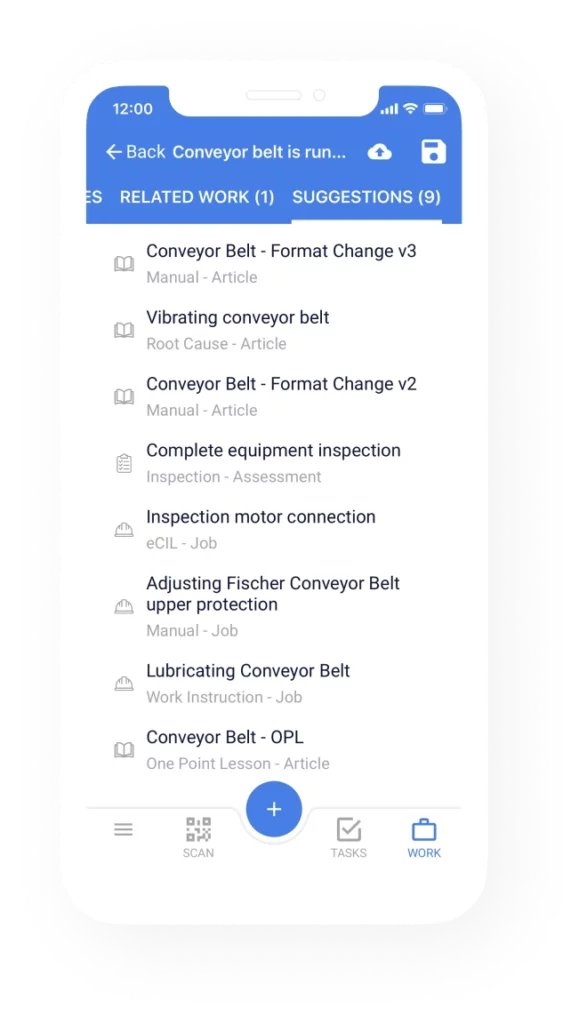
6. Become a Future-Proof Digital Factory
By organizing their workspace, operators can easily see where deviations may occur — or have occurred already. For example, in an unorganized workstation, it can be difficult to notice when a defective product has left the production line. Organizing the workplace makes it easier to identify these subpar products before it’s too late. Connected worker platforms can assist in planning regular 5S audits to check that everything is in order, and they can even automate the creation of deviations depending on the result of the audit. Improving visibility in this way is a big step toward eliminating production defects entirely.
Related Articles

Digitize your inspections, audits and checklists

4Industry targets Nordic market via strategic partnership with Advania

